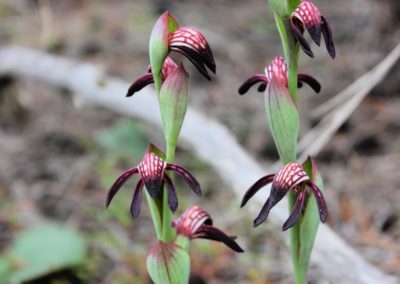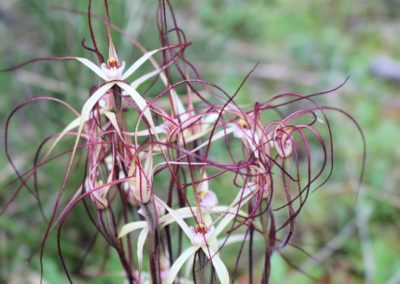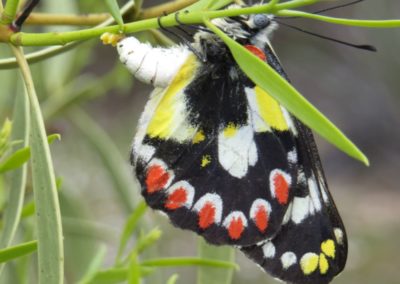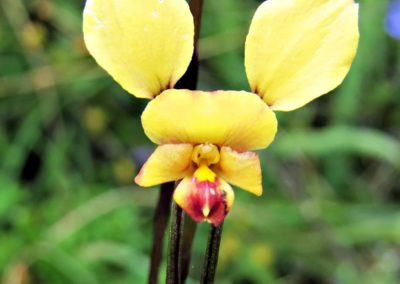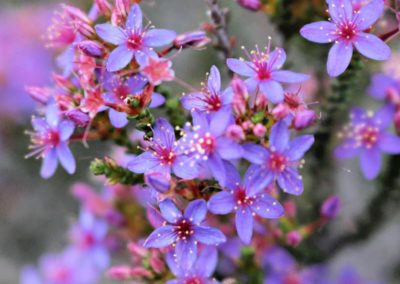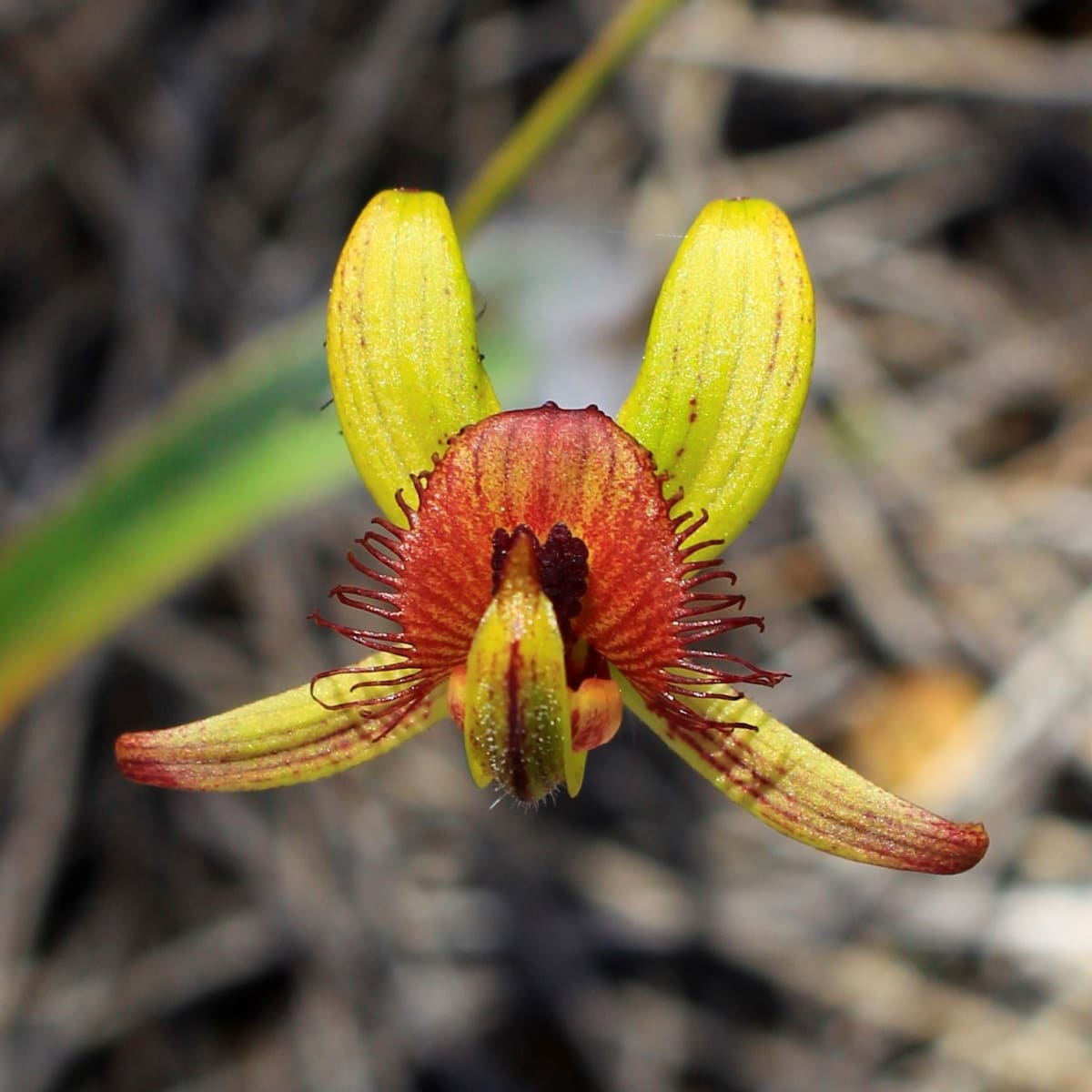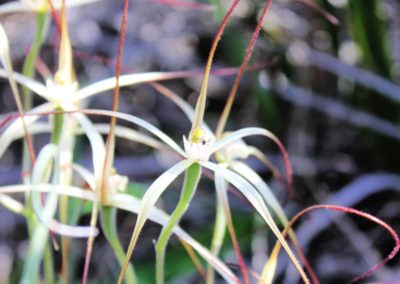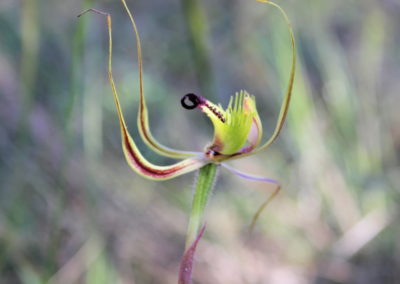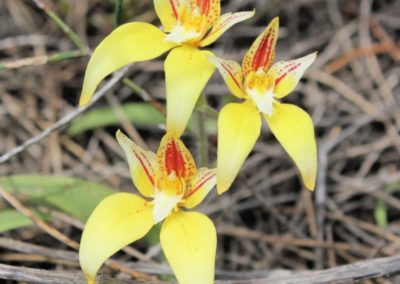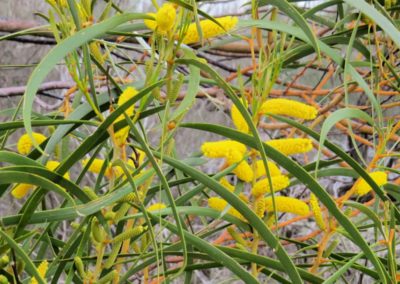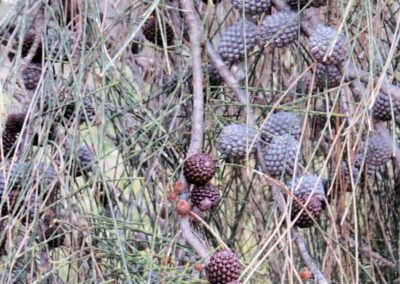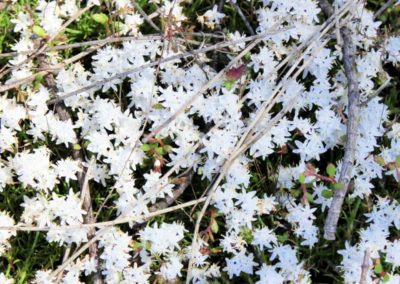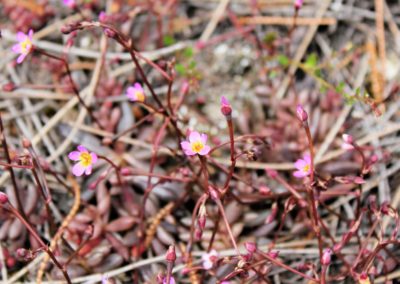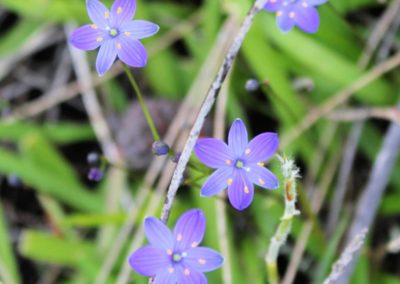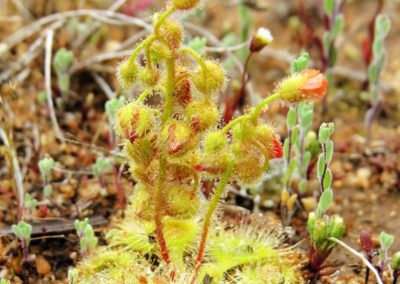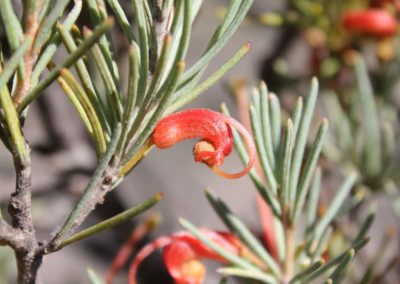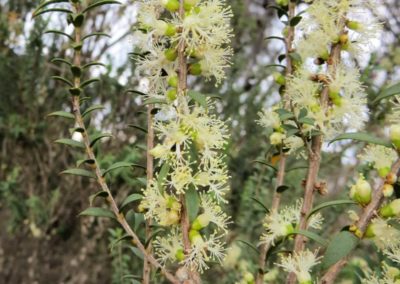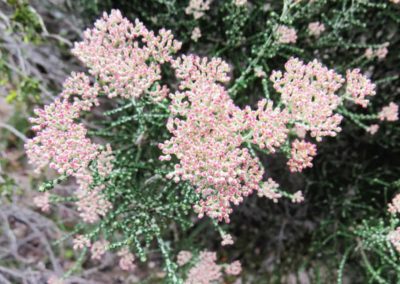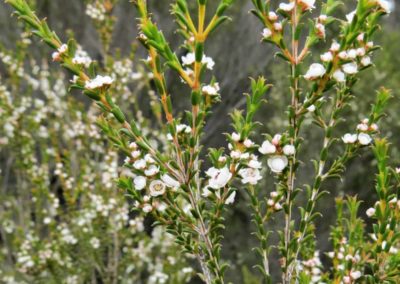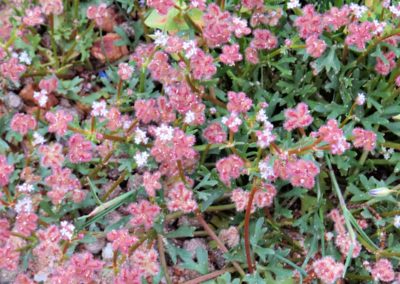-
Mobile Reception (Telstra)
Overview
There are many layers of history evident here at Holland Rocks. This is a remarkable place to witness the effect of natural forces and human intervention on the landscape.
The massive and ancient granite craton, the Yilgarn Block, is the defining geological feature of southwestern Australia, and in some places, like here at Holland Rocks, it is exposed above the surface in outcrops.
Similar granite islands, some more elevated, are scattered right across south-western Australia and they have created their own distinct ecosystems and habitats.
Holland Rocks is a registered Aboriginal site – an indication of the critical role of granite in this dry landscape for Noongar people. Granite was crucially important for its role in holding water on the rock and for the unique ecosystems created around the granite from the extra water run-off which can provide important plant communities and great feeding areas for the wildlife Noongar people relied on.
Like all early explorers, the first Europeans to come this way utilised Noongar knowledge about water in the landscape and focused attention on areas of granite to find and then eventually store water.
John Septimus Roe came this way on 1st October 1848, recording it as ‘Gnamma Holes’ on the last of his many explorations. In 1893 John Holland and his party created a track from Broomehill to the booming goldfields of Coolgardie, via ‘Gnamma Holes’.
In response to the water needs of later settlers a more permanent water collection system was installed. Low stone walls direct the water flow across the granite and collect the water in a concrete tank.
Story of the place
Noongar Boodja
Granite equals water in this drier part of Noongar country where rainfall is low and where many of the nearby lakes are salty.
Holland Rocks is a Registered Aboriginal Site. Evidence of the long Noongar custodianship of this country remain in the artefacts that are found here and many gnamma holes.
Noongar people utilised granite in so many ways. Gnammas were created from surface depressions into larger and deeper water storages. At least 3 gnammas were here at Holland Rocks, however the granite slabs that covered up the gnammas have long been removed and the original holes have since filled up with silt and rock.
Deep time history
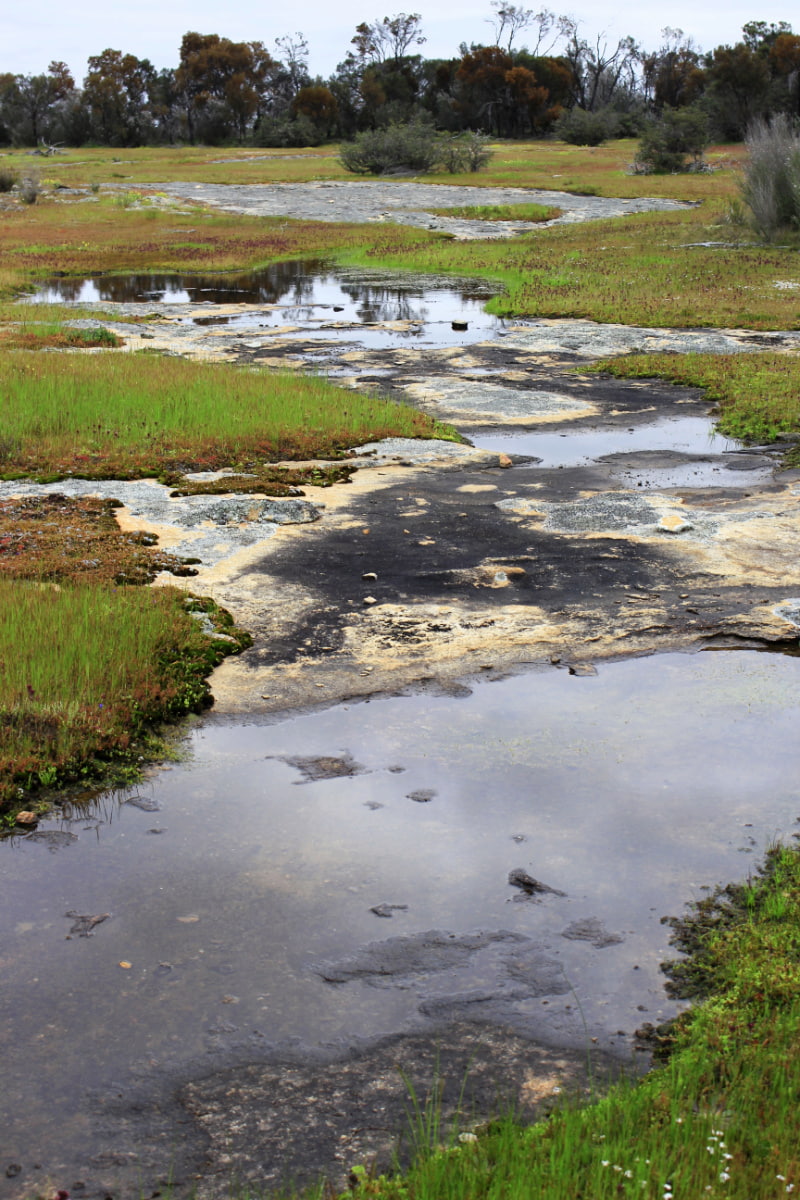
South-western Australia is almost as old as Earth itself. The Yilgarn Craton, the huge plate of granite that carries much of south-western Australia, contains crystals that formed over 4.2 billion years ago, and that plate of granite has ‘floated’ on the earth’s surface in various forms since then.
The granite you can walk on here is around 2.8 billion years old. It was formed deep in the earth and only exposed by hundreds of millions of years of wind and water erosion.
So many features of this landscape are explained by the great age. The worn down and barely undulating flat landscape, the remnants of a once mighty Amazonian scale river system now filled with sediments and appearing as a chain of salt lakes, soils that are so weather-beaten as to rank as amongst the world’s least fertile, and carrying salt accumulated from millennia of salt laden sea breezes. An amazingly complex soil mosaic carrying equally complex plant communities – made up of species whose lineage extends back through 250 million years of continuous evolutionary processes.
Standing on an island of granite makes it easier to appreciate that the granite is but one island, carrying its own distinct plants and animals, amongst an ‘archipelago’ of other plant and soil islands – the patches of laterite, of saline clays, of deeps sands and so on. Just as the islands of the Galapagos evolved slightly different species on different islands, so the soil islands of south-western Australia evolved slightly different species over time as fluctuations in climate washed over them. Except our soil islands are almost 100 times older than the islands of the Galapagos, and exist in a sea of other islands.
Understanding this is fundamental to understanding why a flat temperate area like south-western Australia is one of the biologically richest areas on earth. Rapid evolution continues today, and can be seen in how some very similar species vary slightly from each other along a geographic trajectory of change.
Ecological niches
Professor Stephen Hopper
Biologist
“To the botanical granitophile, Western Australia is the nearest place to heaven on earth. There are vast numbers of granite outcrops, large and small, throughout the subdued terrain of the State… On these outcrops live plants and animals of wonderful diversity, beauty and fascination.” (Life on the Rocks)
Some of the plants found here at Holland Rocks that have specially adapted to this ecological niche:

Image: Anne Rick
Borya sp. Pincushion lilies are a herbaceous perennial that live on granite outcrops, occupying the shallow soil filled depressions.
Borya spp. are abundant and remarkable in their capacity as resurrection plants to withstand dessication to less then 5% of normal leaf moisture content, turning orange in the process, and rehydrating to normal green leaves within a day or two of rainfall. (Nikulinsky & Hopper, Life on the Rocks)
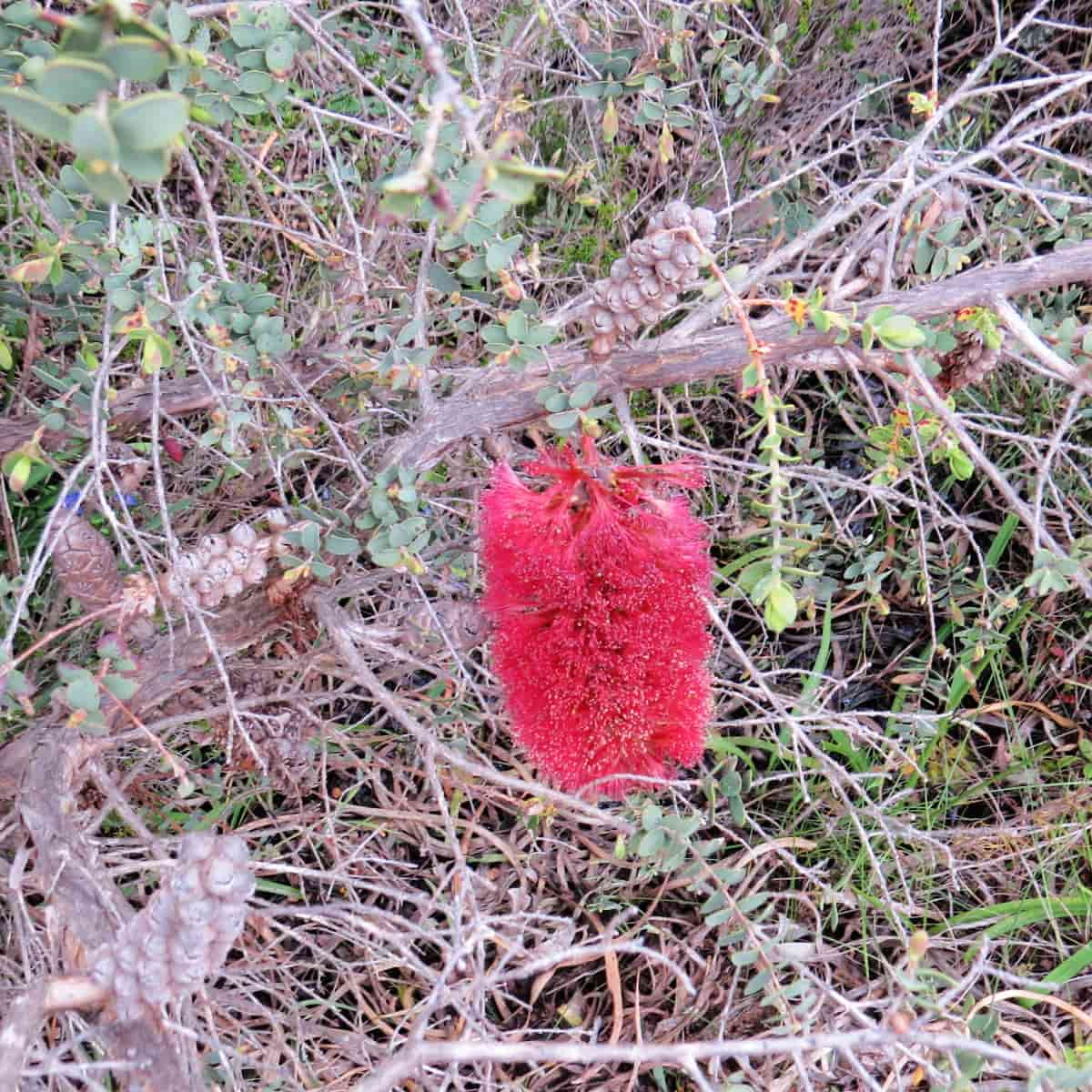
Melaleuca elliptica
Image: Anne Rick
Large red bottlebrush flowers attract honey eaters.
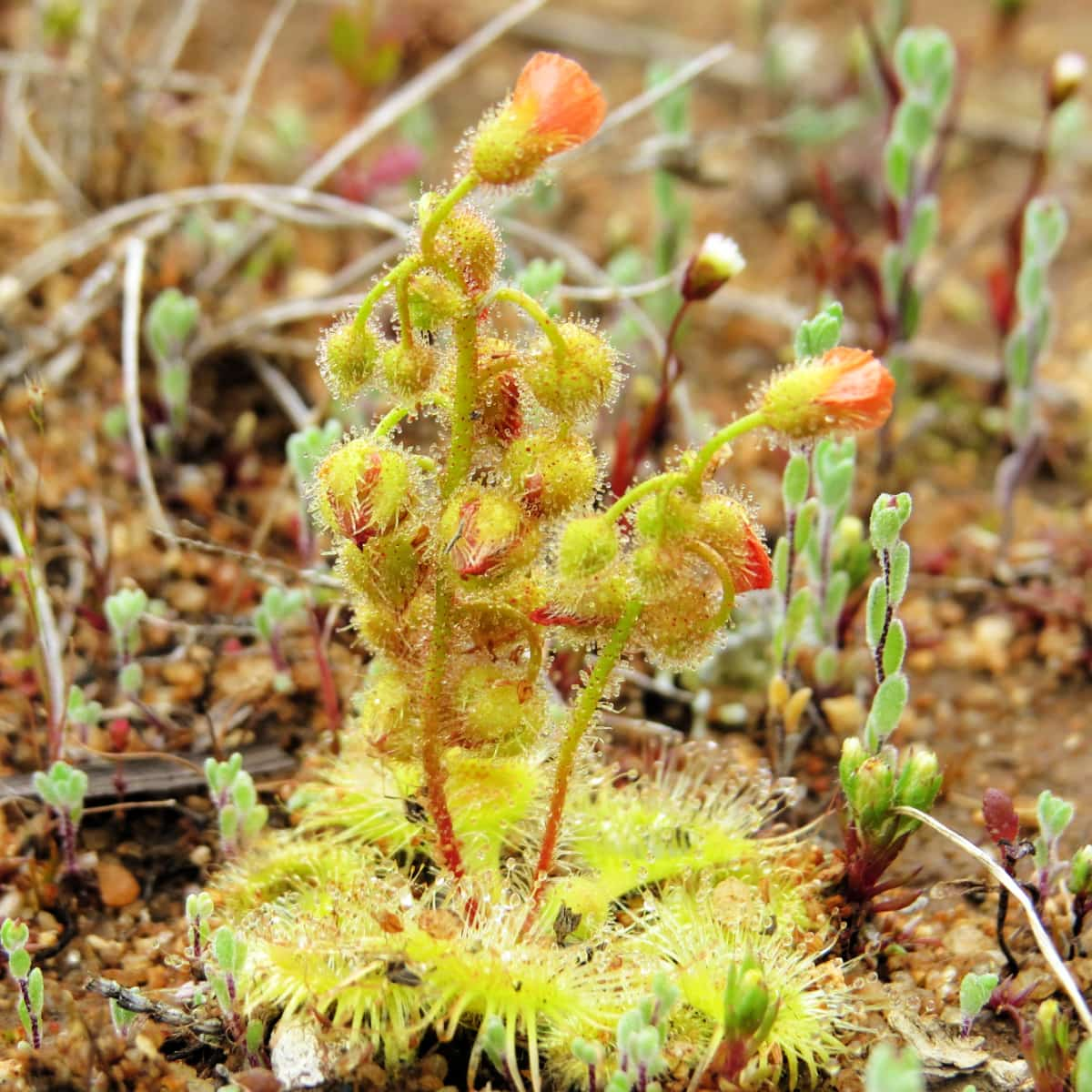
Sundew (Drosera sp.)
Image: Anne Rick
Drosera species eg Drosera macrantha are insectiverous species.
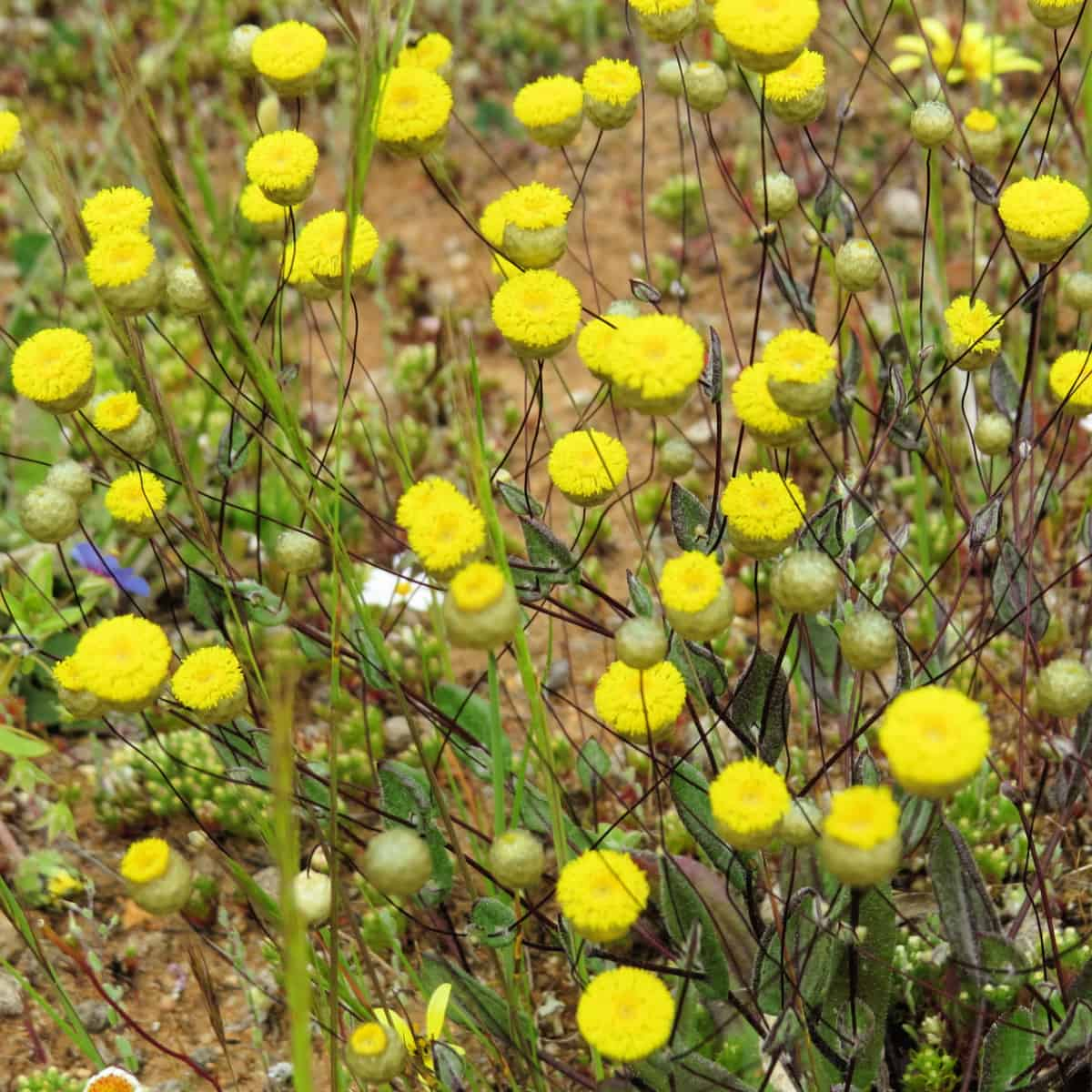
Podolepis lessonii
Image: Anne Rick
Daisies such as Podolepis lessonii and Brachyscome pusilla – drought avoidance through their annual lifestyle.
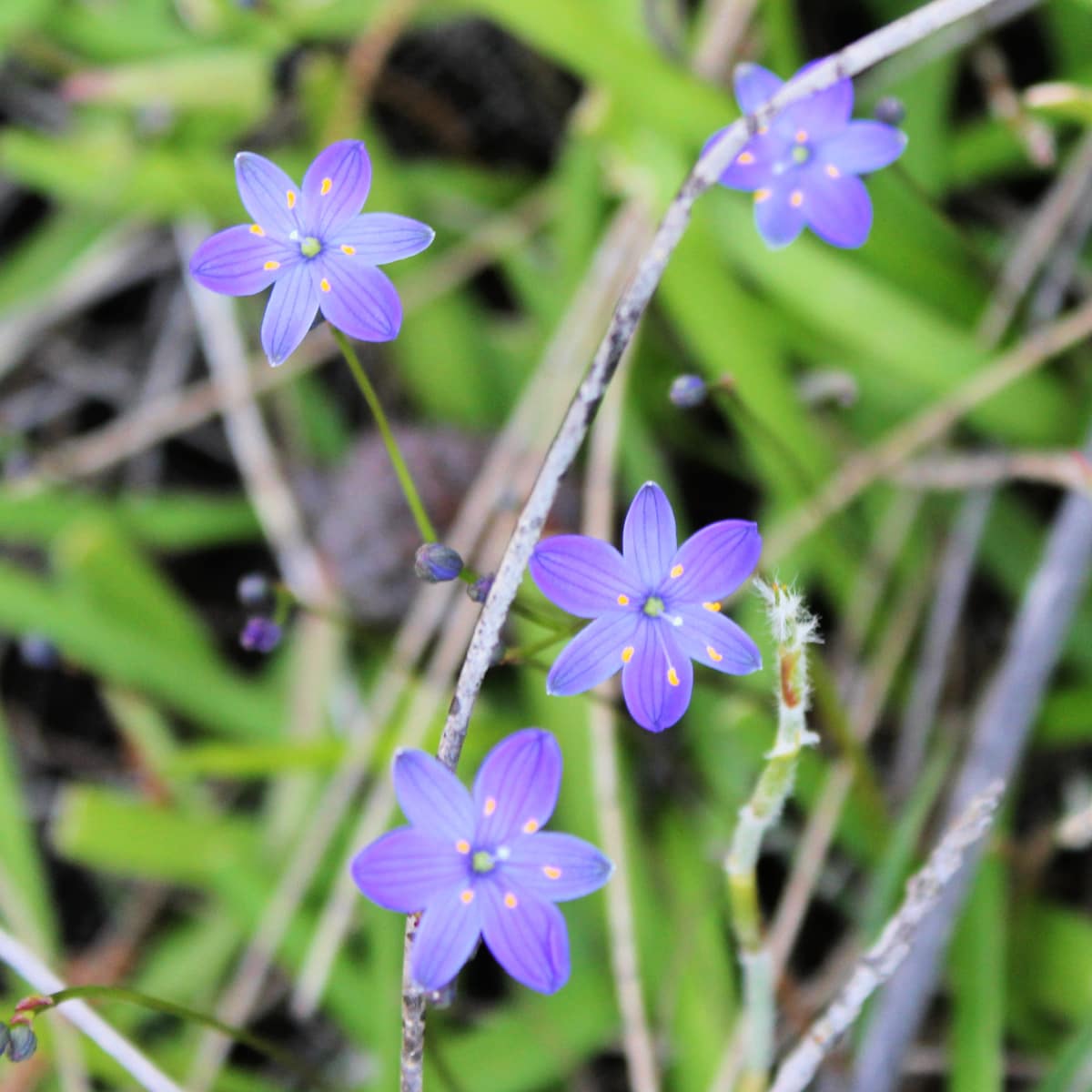
Chamaescilla corymbosa
Image: Anne Rick
Survive the dry seasons with the formation of tubers or corms eg orchids or Chamaescilla corymbosa.
Animal Life
Some of the richest biological diversity of gnammas / rock pools is in the aquatic invertebrates.
At least one hundred species of all sizes (from microscopic up to a few centimetres long) have been associated with south-western Australian gnammas – ranging from nematode and black planarian worms, diverse crustaceans such as fairy and clam shrimps, and insects such as midge larvae, other flies, backswimmers, beetles and bugs.
Settler History
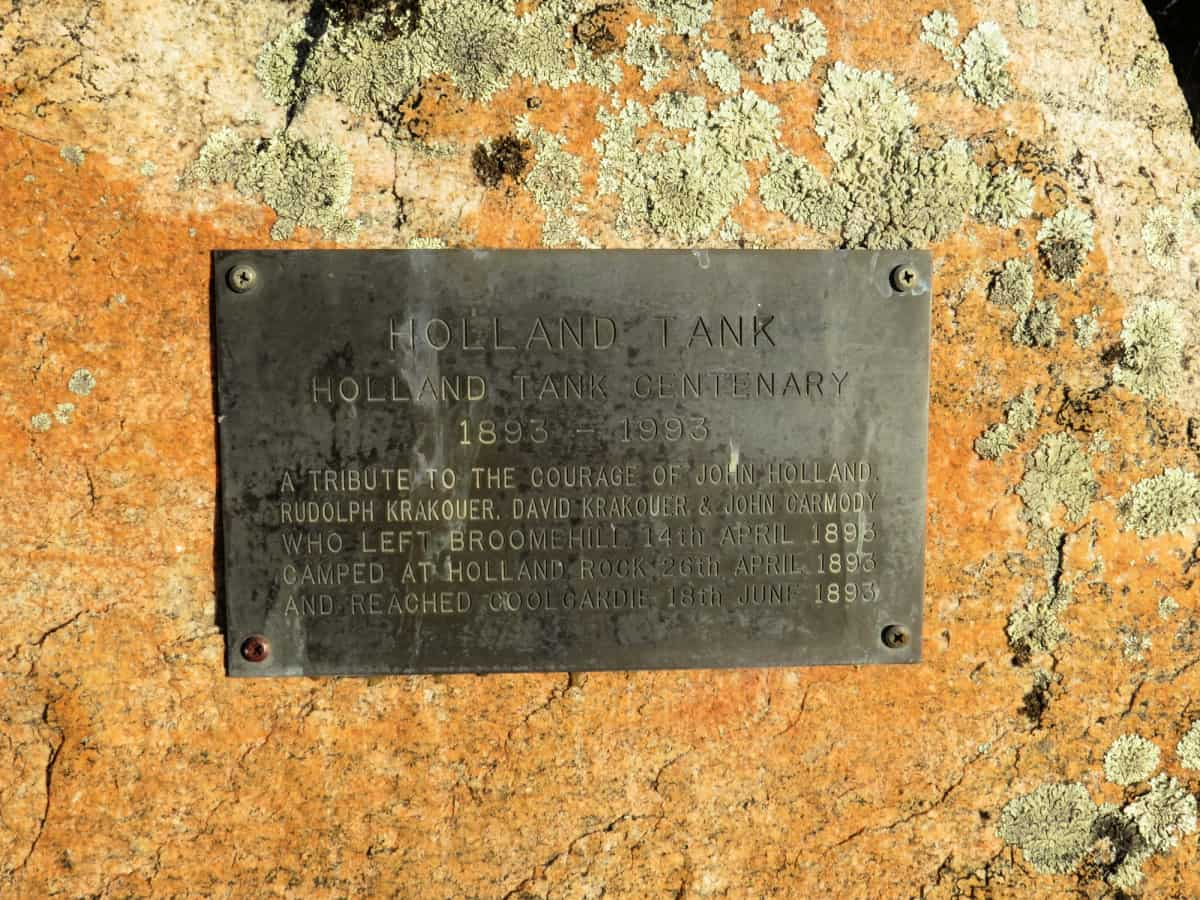
Surveyor-General John Septimus Roe came this way on 1st October 1848, recording it as ‘Gnamma Holes’ on his journey. He was led here by one of his Noongar guides, an example of how early explorers and settlers were only able to survive in this country with assistance from the Noongar people.
Holland Rocks is also an example of how traditional sources of water known to the Noongar people, so precious in the dry inland areas of south-western Australia, were taken over by early settlers.
John Holland and his party of Rudolph Krakouer, David Krakouer and John Carmody followed in Roe’s footsteps in 1893 to create the Holland Track between Broomehill and the booming goldfields of Coolgardie. Holland named this place Krakouer Rock, but it was renamed Holland Rocks in 1920.
“It has been estimated that the Holland Track in its ‘hey day’ saw many travellers, numbered in the thousands, who would disembark at the Port of Albany, journey by train to Broomehill, then set out on the rugged course to Coolgardie, many on foot, and pushing a wheelbarrow to transport their chattels. Camel trains loaded with goods are also reported as having left from Broomehill to supply the wants of the goldfields, and more importantly a much-needed supply of food stuffs.” (Allan Zweck, A History of the Holland Rocks Tank)
The large concrete water tank next to the road was not built by John Holland but was built much later. In the 1920s when settlement was expanding out into this region, there were calls for more secure water sources.
Citizen Scientists

Red beaks (Pyrorchis nigricans)
Image: Anne Rick
This region is fortunate to have a dedicated group, the Lakes District Regional Herbarium and Rare Flora Volunteers, which began as a small group of locals who became very interested in wildflowers.
As they began to collect plants they began to discover some rare species on their properties.
In 1998 the State Government established a program for rare flora volunteers and Newdegate locals Anne Rick and Rosemary Cugley became the coordinators of a rare flora group.
Later, Greening Australia helped the local group with funding for plant identification kits which were the beginning of the Regional Herbaria.
The Lakes District Regional Herbarium and Rare Flora Group have been active ever since. The local collection is held at the library in Newdegate.
Every time a member collects a species, two specimens are taken, one for the state herbarium and one for the local herbarium.
All specimens are recorded in FloraBase (a web-based database of the flora of WA), and so that local knowledge is shared and used by the scientific community.
There is an extra excitement in doing this work in a global biodiversity hotspot, where there is a high chance of finding unrecorded or rare plant species, and there are examples of volunteers in the Lakes District discovering species new to science and new populations of rare plants.

Santalum acuminatum and spotted jezebel butterfly
Image: Anne Rick
The contribution of the Regional Herbaria to the understanding of biodiversity in Western Australia demonstrates the huge value in having people on the ground, who know their patch of country in a fine-grained way that visitors cannot. There is a huge value to the State Government too, and one attempt to quantify the number of hours volunteers have contributed, estimated a worth to the government of many million dollars.
Eileen Croxford
Botanist
Eileen Croxford was collector of the extremely rare Eucalypt ‘Pingrup Pink’ – in fact in between first finding it and then going back to the same spot the area had been entirely cleared.
“I think that was our greatest fear, the fact that the country was being cleared and nobody knew much about it. All the botanists that come down, they always say, ‘Oh you must keep on collecting.”
See & Do
Walk trails
There are no established walk trails here, but it is easy to walk through the open sheoak woodland in between the concrete tank and the granite outcrop, where many orchids can be found.
It is also easy to walk over the large granite outcrop, but please tread very carefully. It is easy to damage the mosses and lichens and other plants that live on the granite. Please try and walk on the exposed rock and leave the precious plantlife alone.
Orchid hunting
Holland Rocks is a wonderful place to find orchids. Just off the road, between the concrete tank and the granite outcrop is a sheoak grove where many orchids can be found. Other orchids will be found on the edge of the granite, and even in shallow beds of soil on the rock.
“The orchid genus Caladenia is the largest to be found on granite outcrops in south-western Australia, with more than 70 species recorded on granite, with a number confined to rocky areas.” (Nikulinksy & Hopper, Life on the Rocks)
Caladenia species you are likely to see around Holland Rocks include:
Small-flowered Donkey Orchid (Diuris porrifolia)
Small-flowered Donkey Orchid (Diuris porrifolia). Image: Anne Rick
Plantlife
It is not just orchids of interest here, for many other spectacular flowering plants have been identified here by the Lakes District Herbarium and Rare Flora Group.
Practical Information
Directions
From Pingrup take the Newdegate-Pingrup Rd, then turn left onto Day Rd. At Hollands Tank Rd turn left and the small reserve is just near the intersection.
From Newdegate take the Newdegate-Pingrup Rd south, then turn right onto Hollands Tank Rd.
Closest towns
Pingrup – 37km via Newdegate-Pingrup Rd
Newdegate – 47km via Newdegate-Pingrup Rd
Where to eat and stay
See the suggestions from our friends at Great Southern Treasures:
Visitor Information
Shire of Kent
Richmond Street, Nyabing
(08) 9829 1051
admin@kent.wa.gov.au
Website
Pingrup Community Resource Centre
Lot 2, Burston St, Pingrup
(08) 9820 1101
pingrupcrc@gmail.com
Website


